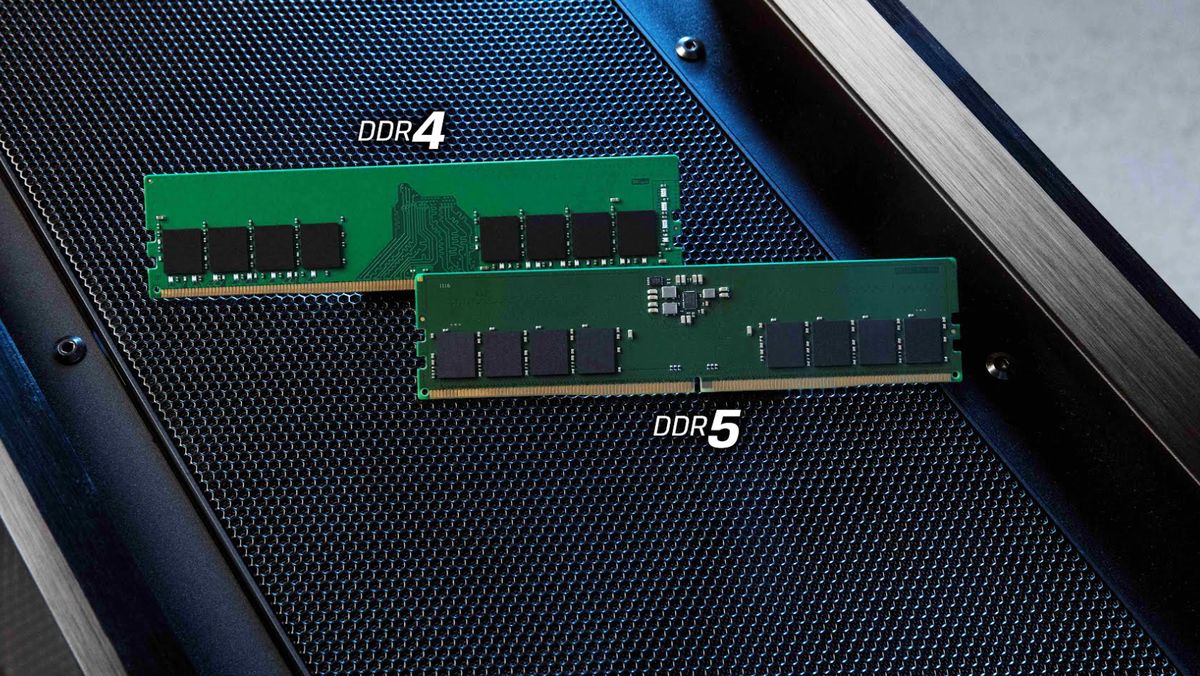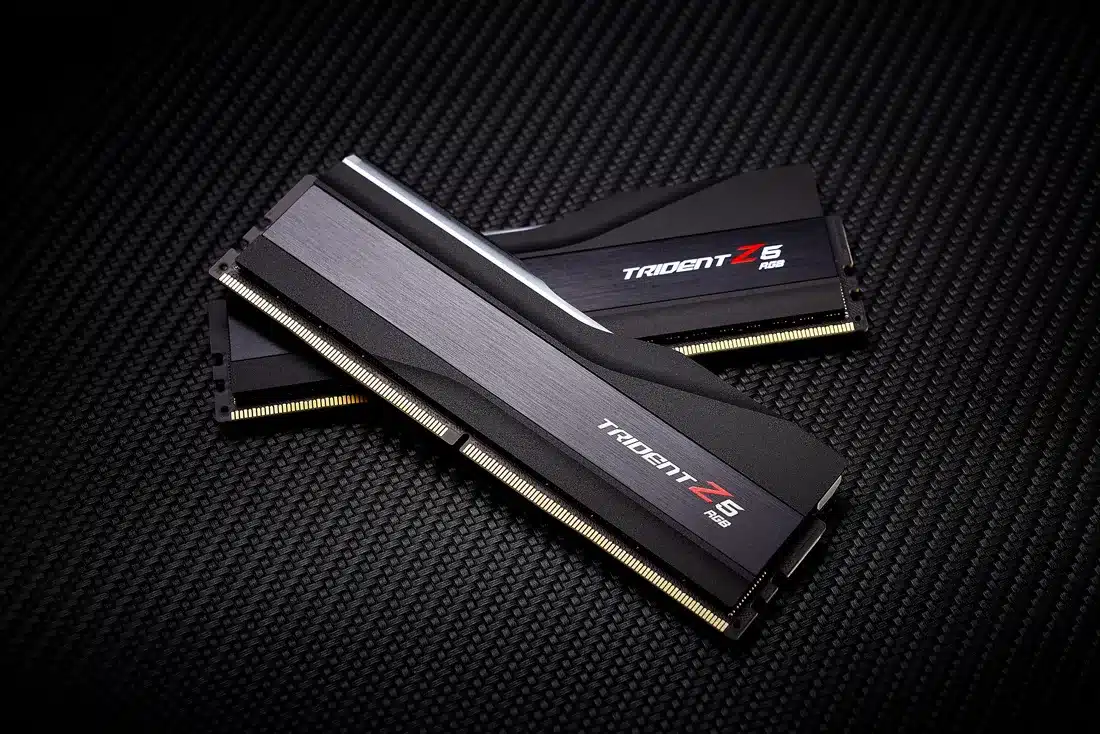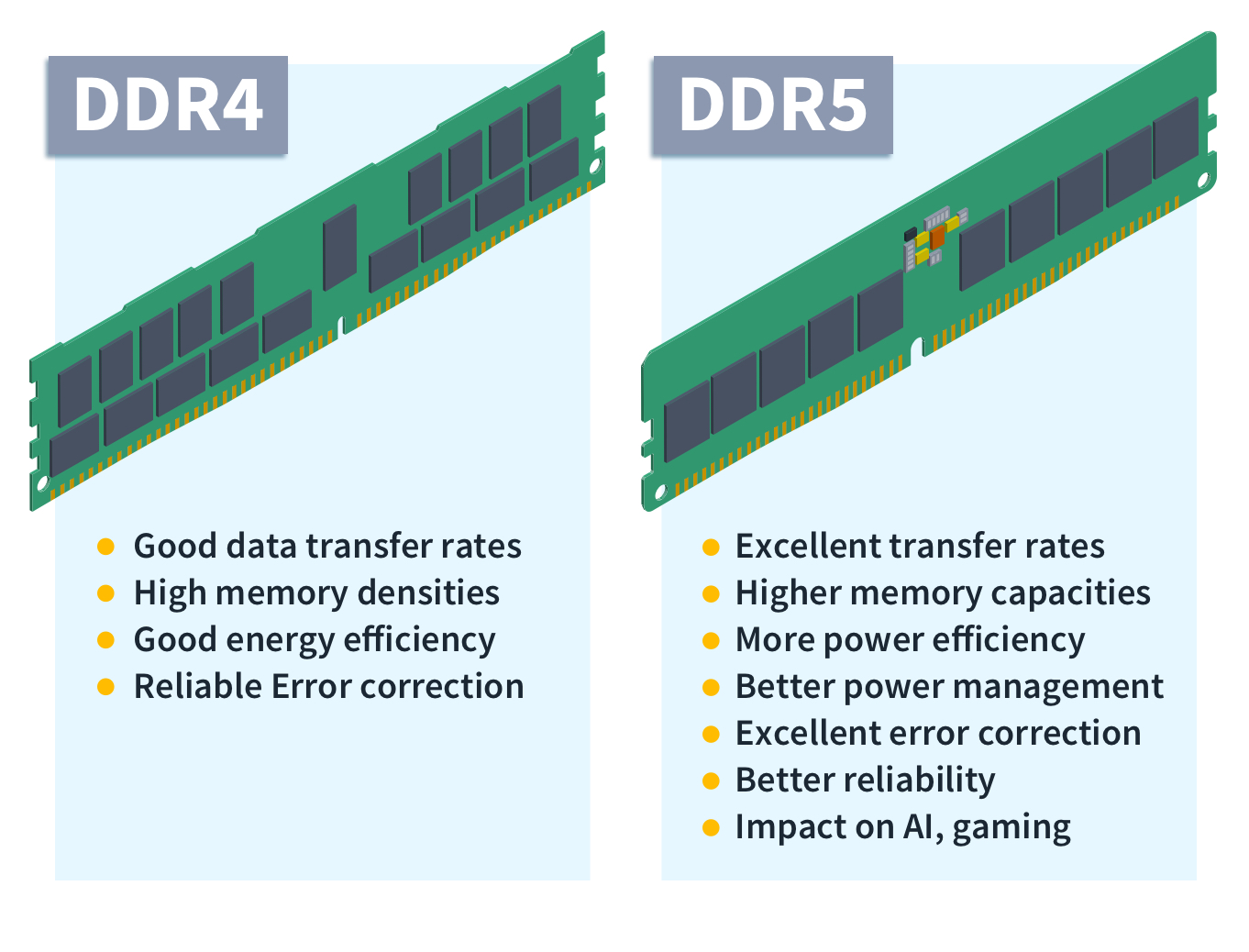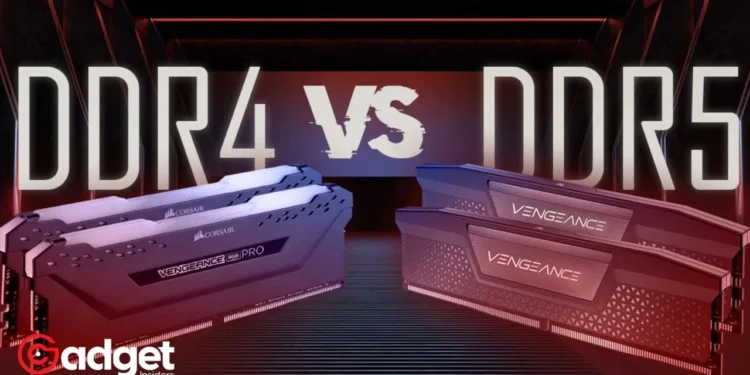In the ever-evolving world of personal computing, the debate between DDR4 and DDR5 RAM has emerged as a critical discussion point for enthusiasts and professionals alike. With the latest CPUs from tech giants Intel and AMD extending support to DDR5, the market has witnessed the arrival of robust DDR5 memory kits. Yet, DDR4 RAM continues to hold its ground, offering an economical yet efficient option for those operating on a tighter budget.

Understanding the Differences: DDR5 vs. DDR4
At first glance, DDR5 RAM modules may appear physically identical to their previous counterparts, maintaining the 288-pin configuration. However, the devil is in the details. DDR5 introduces a significant shift in architecture, adopting dual 32-bit independent channels per module and doubling the burst length from 8 to 16 bytes.
This architectural evolution underlines the core differences in bandwidth and capacity between the two standards.
The Bandwidth and Capacity Equation
The demand for higher bandwidth in RAM has never been more pressing, especially with CPUs boasting increased core counts, such as the Intel Core i9-14900K’s 24 cores. DDR5 addresses this need head-on, offering data rates ranging from DDR5-3200 to DDR5-6400, thereby significantly outpacing DDR4 in terms of bandwidth.
Additionally, DDR5 raises the bar for memory module capacity, with the potential to reach up to 128GB per module – a figure that dwarfs the maximum capacity offered by the previous version of RAM.

Power Efficiency and Operating Voltage
DDR5 also introduces improvements in power efficiency, operating at a base voltage of 1.1V compared to DDR4’s 1.2V. This reduction in voltage, coupled with the integration of power management IC (PMIC) on the DIMM for DDR5, heralds not only energy savings but also a leap towards enhanced voltage regulation and signal integrity.
However, this advancement comes at a cost, contributing to the higher price point of DDR5 modules and the current challenges in supply.
Real-World Performance: DDR4 vs. DDR5 RAM
In testing environments, such as comparisons using Kingston’s Fury Beast DDR5 memory and Intel’s Core i9-12900K, the performance differences between two versions of RAM can often appear marginal. Benchmarks across various applications, from PCMark 10 to Blender and Handbrake, reveal only slight variations in performance.
This suggests that, for many users, the choice between DDR4 and DDR5 may hinge less on raw performance metrics and more on considerations of cost, compatibility, and future-proofing of one’s system.
#DDR4 vs. #DDR5 2023: RAM Comparison 📈#ram #pcbuildtips #gamingpc #pcbuild #ddr4vsddr5 #silentbuilds pic.twitter.com/okiqR199OO
— silentbuildsofficial (@silentbuildschi) July 25, 2023
Compatibility Considerations
The compatibility between the two RAMs with motherboards and CPUs is a critical factor that cannot be overlooked. While DDR4 enjoys widespread compatibility across a range of Intel and AMD processors, DDR5 support is currently limited to the latest generations.
This delineation necessitates careful planning when building a new PC, as motherboards are designed to support either anyone of it, but not both.
Making the Choice: DDR4 or DDR5?
The decision between both the RAMs ultimately depends on an individual’s specific needs, budget, and the desired performance of their PC build. For those on a budget or looking to maximize compatibility with a broader range of CPUs, the previous version 4 remains a compelling option.
However, for users seeking to leverage the latest technological advancements and optimize their systems for future demands, investing in DDR5 could offer long-term benefits, despite its higher initial cost.
Recommendations for Buyers
For budget-conscious builders, DDR4 memory kits offer an excellent balance of performance and value, especially when paired with 13th or 14th-generation Intel processors or older Ryzen 5000 series CPUs.
On the other end of the spectrum, high-end builds aiming for peak performance in gaming or professional applications might justify the premium for DDR5 memory, given its superior bandwidth and capacity potential.

The landscape of PC memory is marked by a dynamic interplay between technological advancement and practical considerations of cost and compatibility. As DDR5 RAM continues to mature and become more accessible, it may eventually eclipse DDR4 as the standard of choice for new PC builds.
However, for the time being, both DDR4 and DDR5 offer viable paths to achieving a high-performing, efficient computing experience, tailored to the needs and constraints of individual users.










